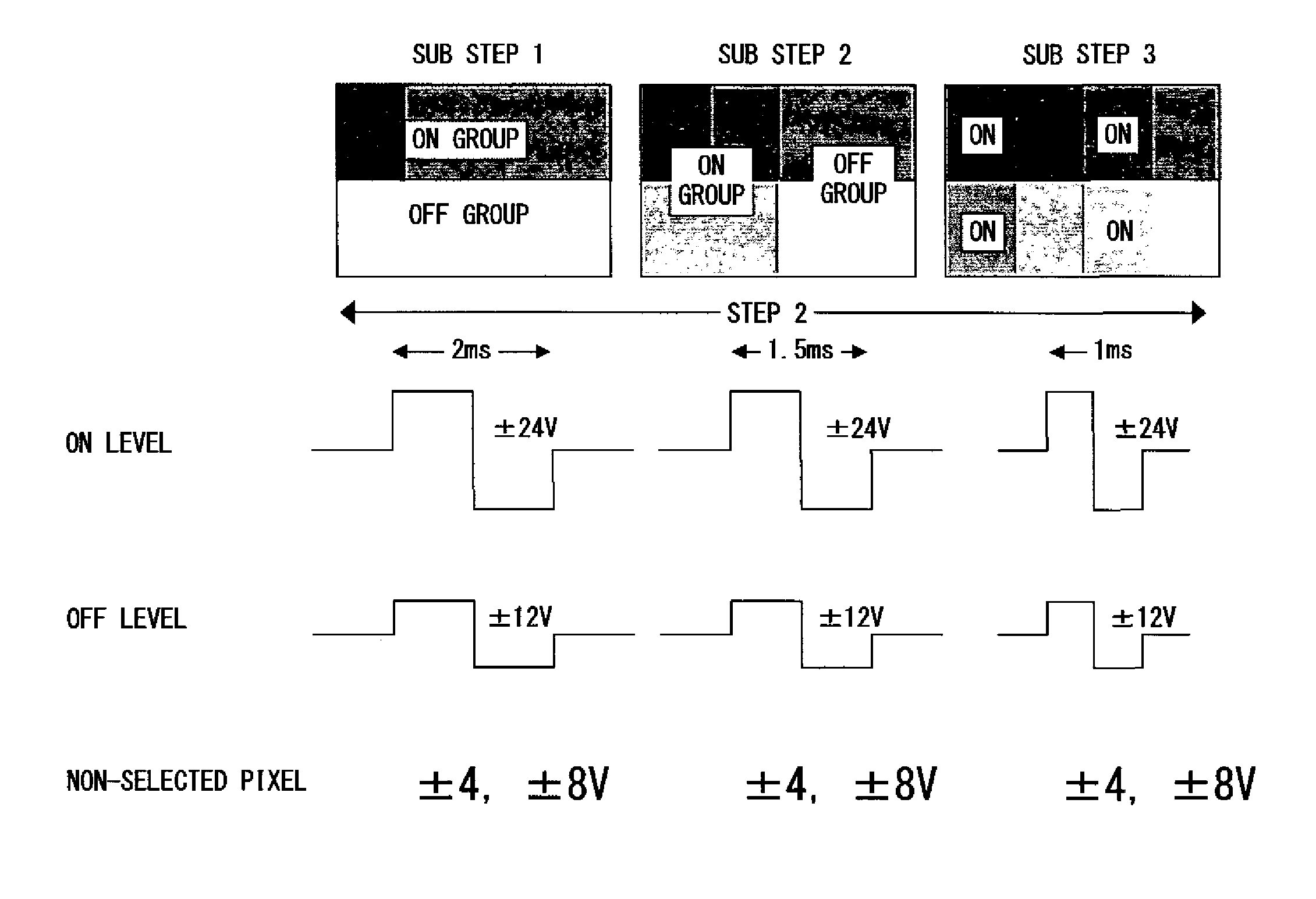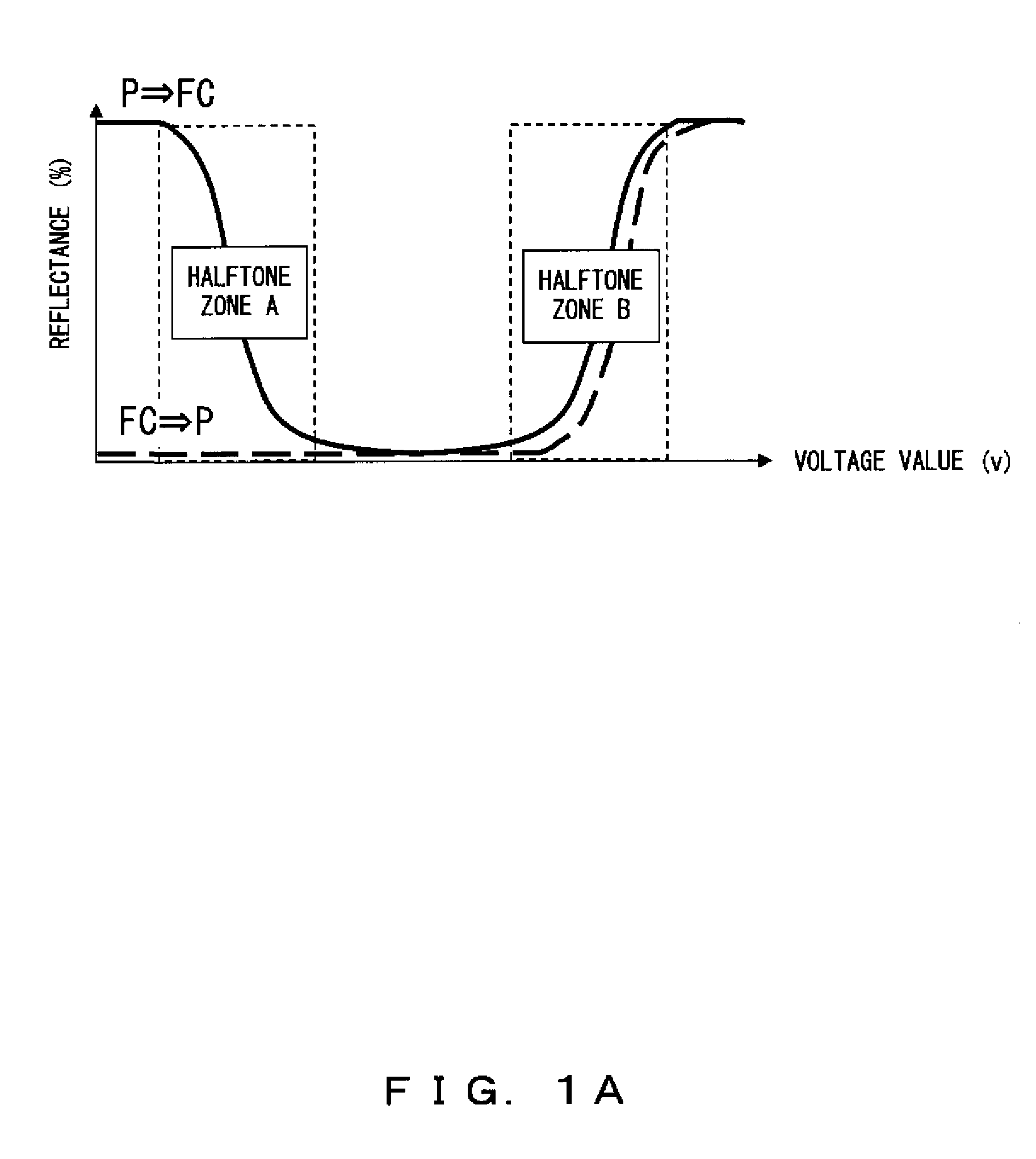Method of driving liquid crystal display element
a technology of liquid crystal display element and display element, which is applied in the direction of instruments, static indicating devices, etc., to achieve the effects of preventing increases in driving voltage, excellent uniformity, and low voltage enduran
- Summary
- Abstract
- Description
- Claims
- Application Information
AI Technical Summary
Benefits of technology
Problems solved by technology
Method used
Image
Examples
first embodiment
[0068]First, by referring to FIG. 2, the present invention is explained with an example of a display with four halftone levels. Because the example uses a four-level halftone display, each pixel in the displaying region is driven to display at one of the levels of a halftone ranging from level 0 through level 3 as shown as the complete pattern in FIG. 2.
[0069]As shown in FIG. 2, first in step 1, each pixel is driven to be in the planar state or in the focal conic state. Only the pixels at level 0 are driven to be in the focal conic state. In step 1, as shown in FIG. 2, driving to the planar state, i.e., to the reflection state is performed at 32V as the ON level, and driving to the focal conic state, i.e., to the non-reflection state is performed at 24V as the OFF level. Next, in substep 1 in step 2, regions other than the regions that have to be at level 3 of a halftone are selected, and the ON pulse (24V) that causes the transition to the focal conic state is applied to the select...
second embodiment
[0074]Next, a second embodiment in which the number of driving times is reduced is explained by using a display example with eight halftone levels, which is shown in FIG. 3.
[0075]The operations performed until driving to the planar state and the focal conic state in step 1 are the same as those in the first embodiment. In step 2, in both the ON group that is to be driven and the OFF group that is not to be driven, the regions corresponding to halftone levels whose number is, for example, the half of the eight levels are selected, and the ON pulse is applied simultaneously to the selected regions as the ON group in substep 1 in step 2.
[0076]Next, a number of regions equal to half the number of the halftone levels are selected in both the ON group and the OFF group set in step 1, and the ON pulse is applied to the selected regions, which will be handled as the ON group in substep 2. This method is used in step 3; in other words, a number of regions equal to half the number of halftone...
PUM
 Login to View More
Login to View More Abstract
Description
Claims
Application Information
 Login to View More
Login to View More - R&D
- Intellectual Property
- Life Sciences
- Materials
- Tech Scout
- Unparalleled Data Quality
- Higher Quality Content
- 60% Fewer Hallucinations
Browse by: Latest US Patents, China's latest patents, Technical Efficacy Thesaurus, Application Domain, Technology Topic, Popular Technical Reports.
© 2025 PatSnap. All rights reserved.Legal|Privacy policy|Modern Slavery Act Transparency Statement|Sitemap|About US| Contact US: help@patsnap.com



